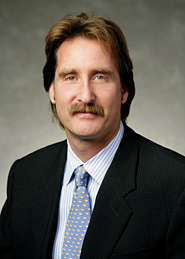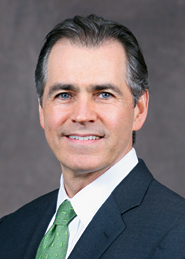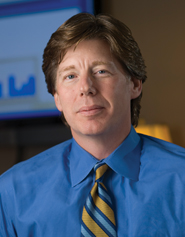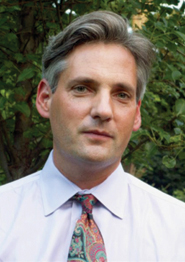New predators are using an old strategy to hunt their prey.
It’s called anticipatory trading. And fleet-footed traders today are using the strategy to sniff out institutional orders in the marketplace and run ahead of them for profit, many in the industry say. These traders approach their targets with high-frequency technology. Many sport bleeding-edge pattern-recognition software.
See Sidebars:
High-Frequency Trading’s Many Faces
But critics are accusing some of these firms with high-frequency trading strategies of front-running. They don’t appreciate how high-speed firms’ software spots footprints left by institutions’ algo orders and then buys alongside them, pushing up the prices institutions pay. According to a recent study, one institutional order in five costs significantly more than average due to these strategies.
As a result, some institutions are up in arms.
"We see it all the time," said Luke Lyons, global head of portfolio trading at AllianceBernstein. "For a long-only manager who’s forced to trade, we just need to be smarter about the way we do it."
Ted Oberhaus, equity trading director at Lord Abbett & Co., sees this behavior playing out mostly with large caps. "There’s absolutely no question that every institution is interfacing with high-frequency traders who are using predatory algos to front-run them," he said.

High-frequency traders, of course, reject this portrayal of their business outright. Their willingness to cross the spread to interact with limit orders helps the markets, they say. And when they detect, say, a large sell order, they might be providing liquidity to sellers who may not have gotten it otherwise.
Still, concerns about anticipatory trading stretch all the way to Capitol Hill. Early last month, Sen. Ted Kaufman, D-Del., addressed the Senate at length about how HFTs were negatively affecting the equities markets. Among his many complaints, he mentioned how these firms who beat institutions to the punch and trade ahead of them are more than just the latest iteration of an old strategy.
"While traders have long tried to trade ahead of large institutional orders, they now have the technology and models to make an exact science out of it," he said.
The Securities and Exchange Commission, in its Jan. 13 concept release, mentioned order anticipators and asked for comments on their effects on the marketplace. The SEC release seeks information to determine "whether the current market structure and the availability of sophisticated, high-speed trading tools enable proprietary firms to engage in order-anticipation strategies on a greater scale than in the past."
The concept release also finds order-anticipation strategies to be dangerous to long-term investors when they seek liquidity to enter into or liquidate a position. "Both the long-term investor and the large buyer (seller) benefit from the liquidity-seeking strategy, in contrast to the order-anticipation strategy where the large buyer (seller) is harmed when the proprietary firm initially trades in front of the large buyer (seller)," the release said.
The anticipatory trading strategies that have institutions so agitated are designed for short-term gains. The anticipatory trader runs vast amounts of execution data through sophisticated pattern-recognition software to determine the direction of prices and find signals generated by large orders. Once he detects, say, a large buy order, he continuously places marketable bids higher than the best offer and buys alongside the institutional order. This pushes up the National Best Bid and Offer.
Over time, pattern-recognition tools have only gotten more advanced and faster, industry pros say. They’re most commonly used by technical traders who believe future prices are predictable through identifying recurring price patterns, said Larry Harris, a professor of finance and economics at University of Southern California’s Marshall School of Business, in his 2003 book on market microstructure, "Trading & Exchanges."
Technical traders, like some high-frequency traders, look for patterns in prices and volume. They assume that price and volume trends can acquire a momentum that can be measured, said Ralph Acampora, a director at Alverita, a research advisory arm of a Geneva-based ETF firm. For years, Acampora headed technical research divisions at Prudential Equity Group and Knight Capital Group.
Anticipators used to sift through publicly available data looking for volume patterns that revealed the footprints of large orders-often just reading the tape. But with algos slicing orders into increments of hundreds of shares these days, the footprints are becoming more difficult to detect, Acampora said.
Now anticipators pour over trading quote data looking for imbalances in a stock’s supply or demand. For the stock, this could mean seeing more executions in a period, wider bid-ask spreads or higher volumes or price volatility than normal.
In addition, regulators and market participants have noticed another tactic. Some high-speed, quasi-market-making firms use persistent hits on either of the many bids or offers they’ve placed in a stock as signals of a large order. When, say, the algo orders of a block take many of the market maker’s offers, the firm will cancel its offers and get more aggressive on the bid side, running up the block’s overall execution price.

Order anticipation isn’t new. Michael Lynch, head of Americas equity execution services at Bank of America Merrill Lynch, has been in equity trading for more than a quarter of a century. And he’s always seen liquidity anticipation strategies.
"My experience has been that there are always traders in the marketplace who try to use pattern recognition in some shape or form," Lynch said.
Traders on early stock markets profited directly when someone unwittingly revealed his intentions. "The guy who ran into the crowd gave a signal because they could hear him calling out on his buy order," Lynch said.
At the old New York Stock Exchange, it was widely believed that the specialist stepped ahead of orders because he saw what was on the limit order book. In the 1990s, SOES bandits on Nasdaq used speedy technology to pick off market makers. They would electronically grab liquidity from market makers whose manual quotes were stale, and then sell the stock back to them at a profit.
The fact that the practice continues at higher speeds in an environment with faster markets isn’t surprising, according to Acampora. "Everybody tries to get ahead of the institutions," he said.
For its definition of those who use order-anticipation strategies, the SEC largely took its cue from Harris, once the chief economist there. He described order anticipators and informed traders as types of speculators in "Trading & Exchanges." But he singles out order anticipators as "parasitic traders" who provide neither liquidity nor price discovery in their quest to profit by predicting how others’ orders will affect prices.
Needless to say, representatives from the high-frequency trading community strongly disagree with this characterization. High-frequency traders that Traders Magazine spoke with all maintain there is nothing wrong with searching for large orders in the marketplace and then trading alongside them.
"A healthy market is supposed to reflect all known information about a stock, including supply and demand," said Cameron Smith, general counsel at Quantlab Financial, a Houston-based quantitative trading shop that uses high-frequency trading strategies. "The fact that an investor is buying a large number of IBM shares obviously impacts demand and should, in an efficient market, trigger a rise in the stock price."
When market participants, including high-frequency traders, forecast a probable price change in a stock, critics of high-frequency trading would argue that "they should nevertheless treat that information like one treats a young child during a game of hide-and-seek," Smith said. "These critics want everyone else to pretend that they don’t detect a change in supply or demand even though they can see the figurative leg sticking out from behind the couch."
An investor who wants to buy large amounts of IBM without prompting an increase in price would, by definition, disadvantage every seller of IBM at that time, Smith added. In essence, some market participants who enter large orders want other market participants-including possibly other institutions-to subsidize their trading.

Fears of high-frequency front-running shouldn’t be an issue, because many institutions have access to the same tools as high-frequency traders, said Richard Gorelick, chief executive of RGM Advisors, a high-frequency trading firm, while speaking at a conference last fall.
"All the techniques that high-frequency traders use are available to the buyside in trying to move large blocks," Gorelick said. "I think the fear is overstated."
Still, many in the industry remain alarmed by what they see, and are quick to decry high-frequency strategies. There is considerable ammunition aimed at those firms today that use pattern-recognition strategies to anticipate large institutional orders.
A recent study by Quantitative Services Group, a transaction-cost research provider, has made waves as it attempted to measure those effects on prices. According to the study, high-frequency trading firms with strategies designed for short-term gains use pattern-recognition software to determine the direction of prices and find signals generated by large orders.
Once it detects, say, a large institutional buy order, it buys alongside it and pushes up the NBBO. As soon as the high-frequency firm senses that the institution is done buying, it’ll offset the position. This produces a rapid price reversal.
During the run-up, block order prices can jump by as much as 40 basis points, said Tim Sargent, president and chief executive of the Naperville, Ill.-based firm. And they reverse by as much as 10 basis points five minutes after the trade.
The increase is significant. Average institutional trading costs across the U.S. were 53 basis points, according to the most recent study of transactions costs by the agency brokerage ITG. The firm’s Global Trading Cost Review divides costs into those generated by implementation shortfall and by commissions.
For the past eight years, QSG has been developing measurement technology to identify orders that encounter cost run-ups and reversals in real time, Sargent said. The firm has built a product it will soon release that tells traders when anticipatory strategies are working against their orders in real time.
About 20 percent of the orders in the study had "significantly" higher-than-average costs of acquiring liquidity, Sargent said. QSG found the high liquidity charges and subsequent price reversals as trading behavior inconsistent with investors with longer horizons. It pointed a finger at HFTs.
"This behavior is consistent with the price action associated with a non-investor competitor who has accumulated a position in the pursuit of a short-term gain-the goal of every successful high-frequency trading strategy," the report concluded.
QSG, whose client base includes traditional long-onlys and hedge funds, analyzed its client executions from Aug. 18, 2009, through Jan. 21. It looked at nearly 10,000 individual orders that exceeded 5 percent of the stock’s average daily trading volume. Nearly three-quarters of the orders on which QSG focused involved small- and mid-cap names.

Quantlab’s Smith, though, said that the QSG study took too narrow a view. It didn’t take into account that traders with high-frequency strategies-who generate a significant percentage of volume-are also most likely responsible for a large number of the good fills the study saw.
In addition, traders with high-frequency trading strategies who are willing to cross the spread to interact with limit orders can be beneficial, Smith said. "So, if I’m an institution, I can either do a market order and I’d pay the spread, or I can post a limit order and not pay the spread," Smith said. "I’d prefer to post limit orders and not pay the spread. Who’s going to interact with my limit order? People with an expectation that, by interacting with my limit order, they’ll profit."
The QSG study might have benefited from looking at all stocks in the marketplace, said Peter Weiler, executive vice president of sales and client services at Abel/Noser, a brokerage that develops trade-cost technology-and a competitor of QSG’s. Across all equities, he said, it’s the natural order of things for there to be reversions in the marketplace that have nothing to do with high-frequency trading, specifically in very low-volume names. It’s illogical to suppose high-frequency trading is happening in low-frequency names, Weiler said.
In fact, trading costs have fallen since high-frequency trading increased its share of average daily volume, Weiler said. "We haven’t seen anything definitive in our universe about that type of volume that’s out there and whether [high-frequency traders] are having any effect on trading," he said.
ITG’s study of institutions’ trading costs supports Weiler’s claim. The most recent review-for the third quarter of 2009-showed that U.S. combined large-cap and small-cap trading costs fell from those of both the previous quarter and on a year-over-year basis.
In fact, trading costs have fallen each consecutive quarter since the fourth quarter of 2008. They now more closely resemble those of 2005, the review showed.
There are many in the industry who won’t blame HFTs for problems in the equities markets, let alone support claims that they’re hurting institutions. Given the group’s involvement with so much volume, it would make sense that high-frequency trading firms would gravitate to anticipatory trading strategies, said Jamie Selway, a managing director at White Cap Trading. But there is so little data available on high-frequency trading that shows exactly how it is affecting prices on large orders, he added.
To Lynch, of BofA Merrill, the equities market structure is the best it’s ever been. And high-frequency traders play an important part within it, he added. They bring liquidity every time they quote inside the NBBO or cross the bid-ask spread.
The institutions, and the brokers who handle their orders, must remain vigilant, said Peter Driscoll, senior equity trader with the Northern Trust Company, speaking about high-frequency traders at a Sen. Kaufman hearing last year.
"It’s my job to stop the people trying to take advantage of my orders," he said. "When I have an order working and I see it’s starting to move up because high-frequency traders have sniffed it out, I’ll remove that order from the marketplace and wait until it reverts to where I want to buy or sell the stock. It’s part of the job of the institutional trader to trade against these people."
(c) 2010 Traders Magazine and SourceMedia, Inc. All Rights Reserved.
http://www.tradersmagazine.com http://www.sourcemedia.com/






